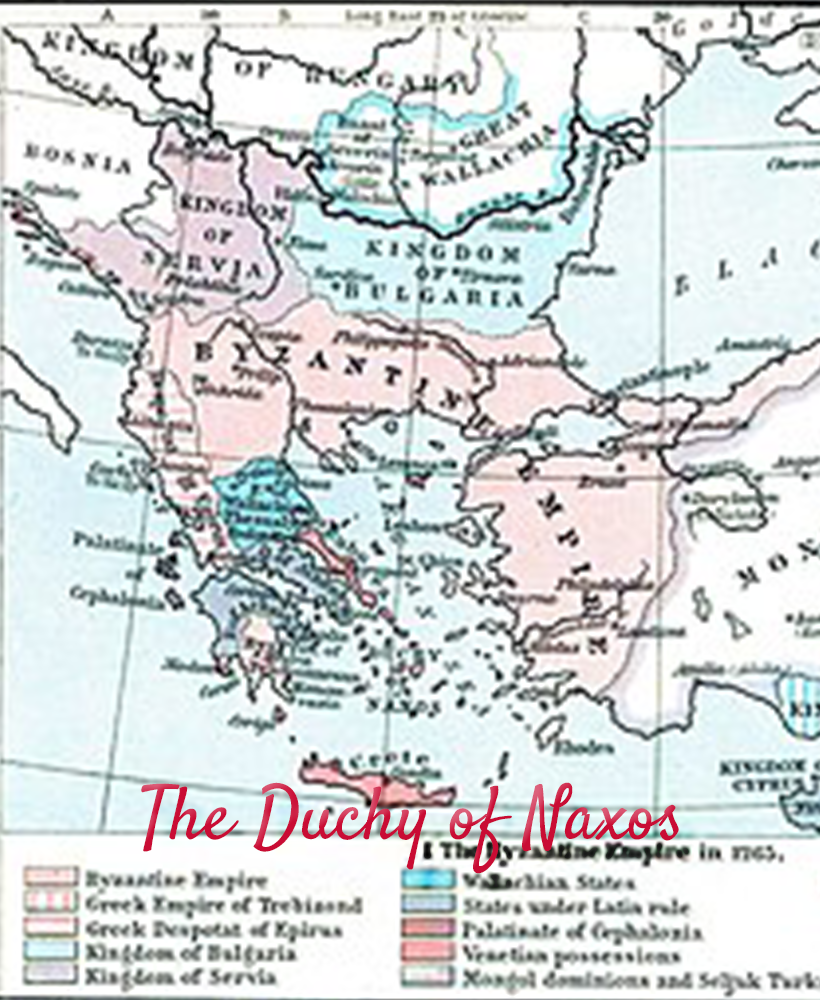The Duchy of Naxos
The Duchy of Naxos
In the aftermath of the Fourth Crusade, with a Latin Empire under the influence of the Venetians established at Constantinople, the Venetian Marco Sanudo conquered Naxos and most of the other Cyclades in 1205–1207. Of all the islands, only on Naxos was there any opposition to Sanudo: a group of Genoese pirates had occupied the castle between the end of Byzantine rule and Sanudo’s arrival. To steel his band’s resolve, Sanudo burnt his galleys “and bade his companions to conquer or die”. The pirates surrendered the castle after a five weeks’ siege.
Naxos became the seat of Sanudo’s realm, known as the “Duchy of Naxos” or “Duchy of the Archipelago“. Twenty-one dukes in two dynasties ruled the Archipelago, until 1566; Venetian rule continued in scattered islands of the Aegean until 1714. Under Venetian rule, the island was called by its Italian name, Nasso.
The Sanudi introduced Western feudal law to the island, based on the Assizes of Romania. However, the native Greek population continued to use Byzantine law for civil matters at least until the late 16th century.
In the 13th century, following the capture of Antalya and Alanya on the southern Anatolian coast by the Seljuk Turks, refugees from these areas settled in Naxos.[10] In the 14th century, the island was once more exposed to raids, this time from the Anatolian Turkish beyliks, chiefly the Aydınids. In turn, the Sanudi assisted the Genoese in capturing Chios in 1304 and the Knights Hospitaller in their conquest of Rhodes in 1309, in order to stop these islands being used as Turkish pirate bases. Nevertheless, raids against Naxos were recorded in 1324 and 1326, and in 1341, Umur of Aydın carried off 6,000 people from the island and imposed a payment of tribute. Two years later, however, the Smyrniote crusade captured his main port, Smyrna.









